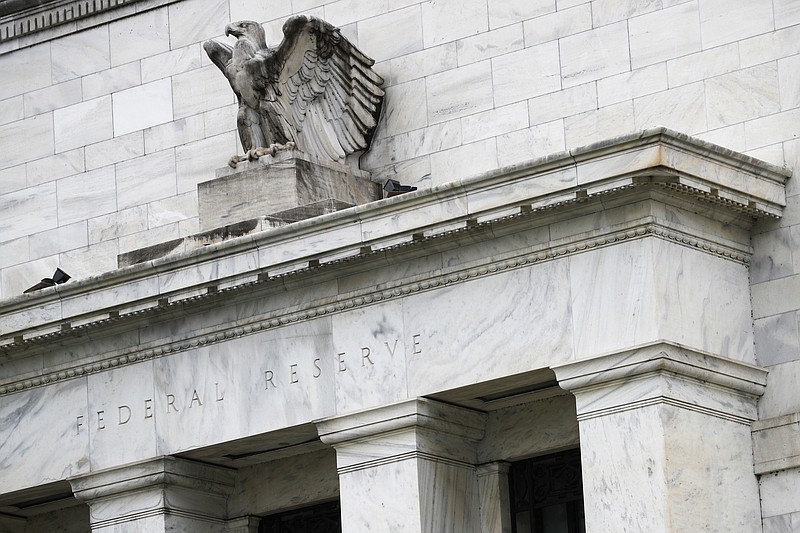The Federal Reserve said Friday that it would not extend a temporary exemption of a rule that dictates the amount of capital that banks must keep in reserve, a loss for big banks and their lobbyists, who had been pushing to extend the relief beyond its March 31 expiration.
At the same time, the Fed opened the door to future tweaks to the regulation if changes are deemed necessary to keeping essential markets functioning smoothly. Banks are required to keep easy-to-access money on hand based on the size of their assets, a requirement known as the supplementary leverage ratio, the design of which they have long opposed.
The Fed introduced the regulatory change last year. It has allowed banks to exclude both their holdings of Treasury securities and their reserves - which are deposits at the Fed - when calculating the leverage ratio.
The goal of the change was to make it easier for the financial institutions to absorb government bonds and reserves and still continue lending. Otherwise, banks might have stopped such activities to avoid increasing their assets and hitting the leverage cap, which would mean having to raise capital - a move that would be costly for them. But it also lowered bank capital requirements, which drew criticism.
As a result, the debate over whether to extend the exemptions was a heated one.
Bank lobbyists and some market analysts argued that the Fed needed to keep the exemption in place to prevent banks from pulling back from lending and their critical role as both buyers and sellers of government bonds. But lawmakers and researchers who favor stricter bank oversight argued that the exemption would chip away at the protective cash buffer that banks had built up in the wake of the financial crisis, leaving them less prepared to handle shocks.
The Fed took a middle road: It ended the exemption but opened the door to future changes to how the leverage ratio is calibrated. The goal is to keep capital levels stable, but also to make sure that growth in government securities and reserves on bank balance sheets - a natural side effect of government spending and the Fed's own policies - does not prod banks to pull back.
"The devil's going to be in the details," said Jeremy Kress, a former Fed regulator who teaches at the University of Michigan. "I want to make sure any changes the Fed makes to the supplementary leverage ratio doesn't undermine the overall strength of bank capital requirements."
The temporary exemption had cut banks' required capital by an estimated $76 billion at the holding company level, although in practice other regulatory requirements lessened that impact. Critics had warned that lowering bank capital requirements could leave the financial system more vulnerable.
That is why the Fed was adamant in April when it first introduced the exemption that the change would not be permanent.
"We gave some leverage ratio relief earlier by temporarily - it's temporary relief - by eliminating, temporarily, Treasuries from the calculation of the leverage ratio," Jerome Powell, the Fed chair, said during a July 2020 news conference. He noted that "many bank regulators around the world have given leverage ratio relief."
Other banking regulators, like the Federal Deposit Insurance Corporation and the Office of the Comptroller of the Currency, took longer to sign onto the Fed's exemption but eventually did.
Even though the exemption had been a tough sell in the first place, persistent worries over Treasury market functioning had raised the possibility that the Fed might keep it in place.
The government has been issuing huge amounts of debt to fund pandemic relief packages, pumping Treasury bonds into the market. At the same time, reserves are exploding as the Fed buys bonds and the Treasury Department spends down a cash pile it amassed last year. The combination risks filling up bank balance sheets. The fear is that banks will pull back as a result.
That's because the supplementary leverage ratio measures a bank's capital - the money it can most easily tap to make through times of trouble - against what regulators call its "leverage exposure." That measure counts both its on-balance sheet assets - like Treasuries - and exposures that do not appear on a bank's balance sheet but may generate income.
If banks fail to keep capital on hand that matches with their assets, they are restricted from making payouts to shareholders and handing executives optional bonuses.
Banks desperately want to avoid crossing that line. So if there is any danger that they might breach it, they stop taking on assets to make sure that they stay within their boundaries - which can mean that they stop making loans or taking deposits, which count on their balance sheets as "assets."
Alternatively, banks can pay out less capital to make sure their ratio stays in line. That means smaller dividends or fewer share buybacks, both of which bolster bank stock prices and, in the process, pay for their executives.
Some banks have themselves pushed for officials to extend the exemption.
"This adjustment for cash and Treasury should either be made permanent or, at a minimum, be extended," Jennifer Piepszak, JPMorgan Chase's chief financial officer, said on the bank's fourth-quarter earnings call.
Piepszak added that if the exemption for reserves was not extended, the supplementary leverage ratio would become binding and "impact the pace of capital return." She has separately warned that the bank might have turn away deposits.
Prominent Democrats have had little patience for such arguments.
"To the extent there are concerns about banks' ability to accept customer deposits and absorb reserves due to leverage requirements, regulators should suspend bank capital distributions," Sens. Elizabeth Warren and Sherrod Brown, both on the Senate Banking Committee, wrote in a letter to Fed leadership.
